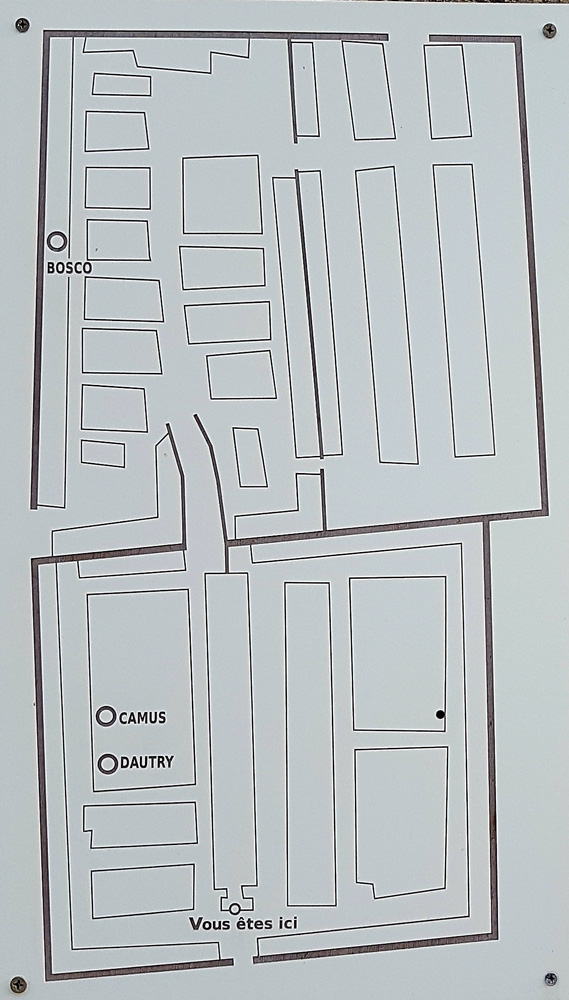Albert Camus
Fun Facts
Camus, considered a handsome man at the time, was a bit of a womaniser. He married and divorced twice as a young man, stating his disapproval of the institution of marriage throughout, and had many extramarital affairs. When he was just 20 he met a beautiful drug addict named Simone Hié. She was addicted to morphine, and despite his family’s disapproval Camus married her to help her fight her addiction. He later discovered she was “cuddling” with her doctor at the same time and the couple divorced shortly after.
French President Nicolas Sarkozy suggested that his remains be moved to the Panthéon, an idea that was criticised by Camus’s surviving family and went no further.
Cemetery Information:
Final Resting Place:
Cimetière de Lourmarin
Avenue Henri Bosco
Lourmarin, , 84160
France
Europe
Map:

Grave Location:
Camus Family PlotGrave Location Description
As you enter the cemetery make an immediate left turn and walk to the end of the path then turn right. Walk about 50 feet and the simple stone memorial for philosopher and author Albert Camus is on the right.
Grave Location GPS
43.759703702613244, 5.362006968867101Visiting The Grave:
Photos:
Read More About Albert Camus:
- Wikipedia Entry
- Life is Absurd! Exploring Albert Camus’ Rebellious Philosophy
- Albert Camus on the Meaning of Life: Faith, Suicide, and Absurdity
- Camus' Stance On Algeria Still Stokes Debate In France
- The Death of Camus - The Atlantic
- “At The Very Instant He Struck The Tree”
- New book claims Albert Camus was murdered by the KGB
- Lourmarin: A Dream Destination in Provence
- Lourmarin, the secret land of Albert Camus
- Albert Camus in the Sun - The Atlantic





